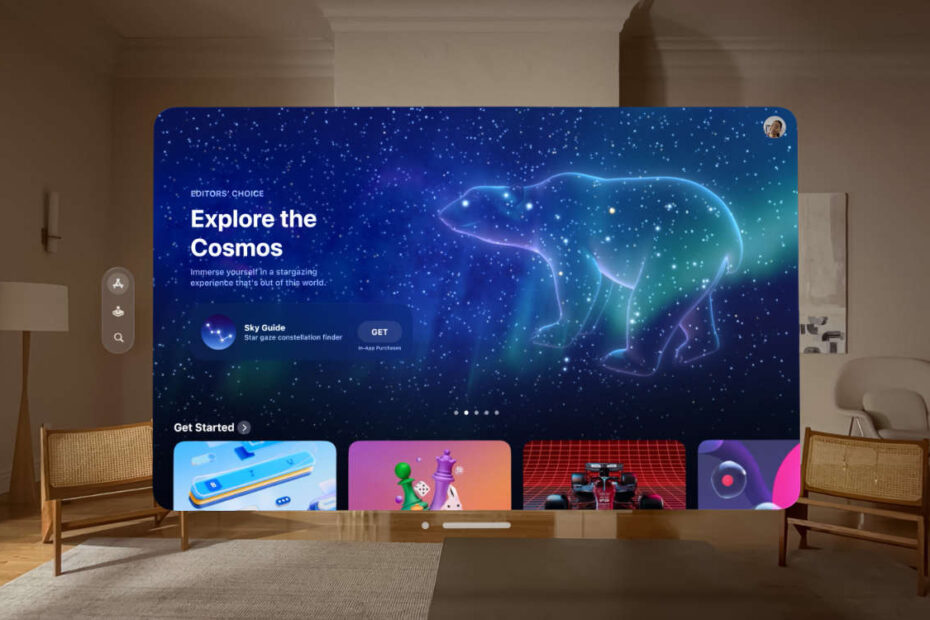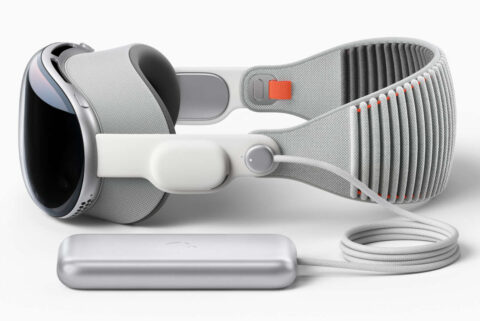You’ve probably seen the news: Apple just unveiled Vision Pro, a $3499 “spatial computer” that projects apps into your home via an advanced mixed-reality headset. Launched at the end of a jam-packed WWDC keynote, Apple’s slick presentation made the technology look incredibly seamless and futuristic, despite a few unsettling segments that came across more Black Mirror than Iron Man.
But how does Apple’s new augmented reality platform hold up in, you know, actual reality?
Thanks to hands-on Vision Pro sessions for those lucky enough to be at WWDC in person, we’ve already got a bunch of first impressions from critics and reviewers. The consensus so far seems to be that Apple has created one of the best tech demos ever, with a product that’s leagues better than similar headsets on the market. Everything looks incredibly crisp, interacting with apps Minority Report style is mesmerizing, and sports and 3D movies look better than ever.
But most testers agree there are still question marks over long-term comfort, battery life, productivity for actual work, and the uncanny valley effect that come into play whenever you interact with another human. Plus there’s that eye-watering price-tag, which hopefully will come down with subsequent models if early adopters really take to the first wave of Vision Pro. But there’s one thing every tester seems to have in common: a sense of awe and wonder.
Let’s dive deeper into those first impressions.
Engadget: A new milestone for mixed reality, but issues remain
“At the very least, Apple has succeeded in crafting the most impressive pitch for spatial computing yet. It’s not just about games or forcing people to care about the metaverse. The Vision Pro wants to bring the things you already do on your computers into mixed reality. Perhaps this will lead to cheaper and more consumer-friendly headsets down the line. Maybe it sets Apple up for a hologram-filled future, where you don’t even need to wear glasses to see digital elements. So much is uncertain. But for Apple, jumping into spatial computing could be worth the risk.”
TechRadar: I just wore the future
“Perhaps it was the moment a virtual butterfly effortlessly landed on my extended finger, or maybe it was the dinosaur’s snaggle-toothed maw that came within inches of my face, or even the mountaineer who balanced barefoot on a thin cable pulled taut across a vast ravine. In truth, it was all of those experiences with Apple’s stunning Apple Vision Pro spatial computing headset that convinced me I’d just experienced the true future of VR.”
Financial Times: bringing the metaverse to life
“Moving from app to app using the device could hardly be more intuitive thanks to eye- and hand-tracking. Click a button with your right hand, and an iPhone-like home screen appears. Glance at a photo or icon, then pinch your fingers to “double-click”. You can scroll through photos with a swiping gesture, or zoom in as if a giant smartphone were projected in front of your face. The device can easily move between virtual reality, in which the wearer is fully immersed in a digital world, and “augmented reality,” which overlays images upon the real surroundings. An Apple Watch-like dial allows you to manually fade between these two modes or, in some settings, the effect is automatic: if a person stands beside you, just look at them and their image will slowly appear and become clearer with time.”
9to5Mac: I just tried Apple’s first spatial computer
“Do some features of Vision Pro seem gimmicky? Absolutely. But much of what I saw today is proof of just how impressive mixed reality can be when it’s done right, using top-of-the-line hardware and software. As the ecosystem expands, some of the content that may seem gimmicky can be replaced with incredible experiences. The hardware of Vision Pro is absolutely industry-leading. I couldn’t see a single pixel on the 4K displays, and even the edges of the content on either side of me were crisp and clear. The combination of those displays and the powerful M2 and R1 chips inside mean that Vision Pro excels at everything it does.”
The Verge: it’s the best headset demo ever.
“Apple has clearly solved a bunch of big hardware interaction problems with VR headsets, mostly by out-engineering and out-spending everyone else that’s tried. But it has emphatically not really answered the question of what these things are really for yet: the main interface is very much a grid of icons, and most of the demos were basically projections of giant screens with very familiar apps on them. Safari. Photos. Movies. The Freeform collaboration app. FaceTime video calls. There was one demo with 3D dinosaurs where a butterfly landed on my outstretched hand, but that was as much “augmented reality” as I really experienced.”
CNET: this is the headset I’d use to watch 3D Avatar
“The cinema demo was what really shocked me, though. I played a 3D clip of Avatar: The Way of Water in-headset, on a screen in various viewing modes including a cinema. Apple’s mixed reality passthrough can also dim the rest of the world down a bit, in a way similar to how the Magic Leap 2 does with its AR. But the scenes of Way of Water sent little chills through me. It was vivid. This felt like a movie experience. I don’t feel that way in other VR headsets.”
WIRED: The Opposite of Disappearing
“Every successful Apple product of the past two decades has disappeared into our lives in some way—the iPhone into our pockets, the iPad into our purses, the Apple Watch living on our wrists, and the AirPods resting in our ears. Wearing the Vision Pro for hours on end will call into question what it means to compute, but also, what it means to live in the real world. My forehead felt cool when I took the Vision Pro off after around 30 minutes, a testament to Apple’s considerate design. But my face also breathed with relief, the way it has after using other heads-up displays. The air feels more real out here.”



